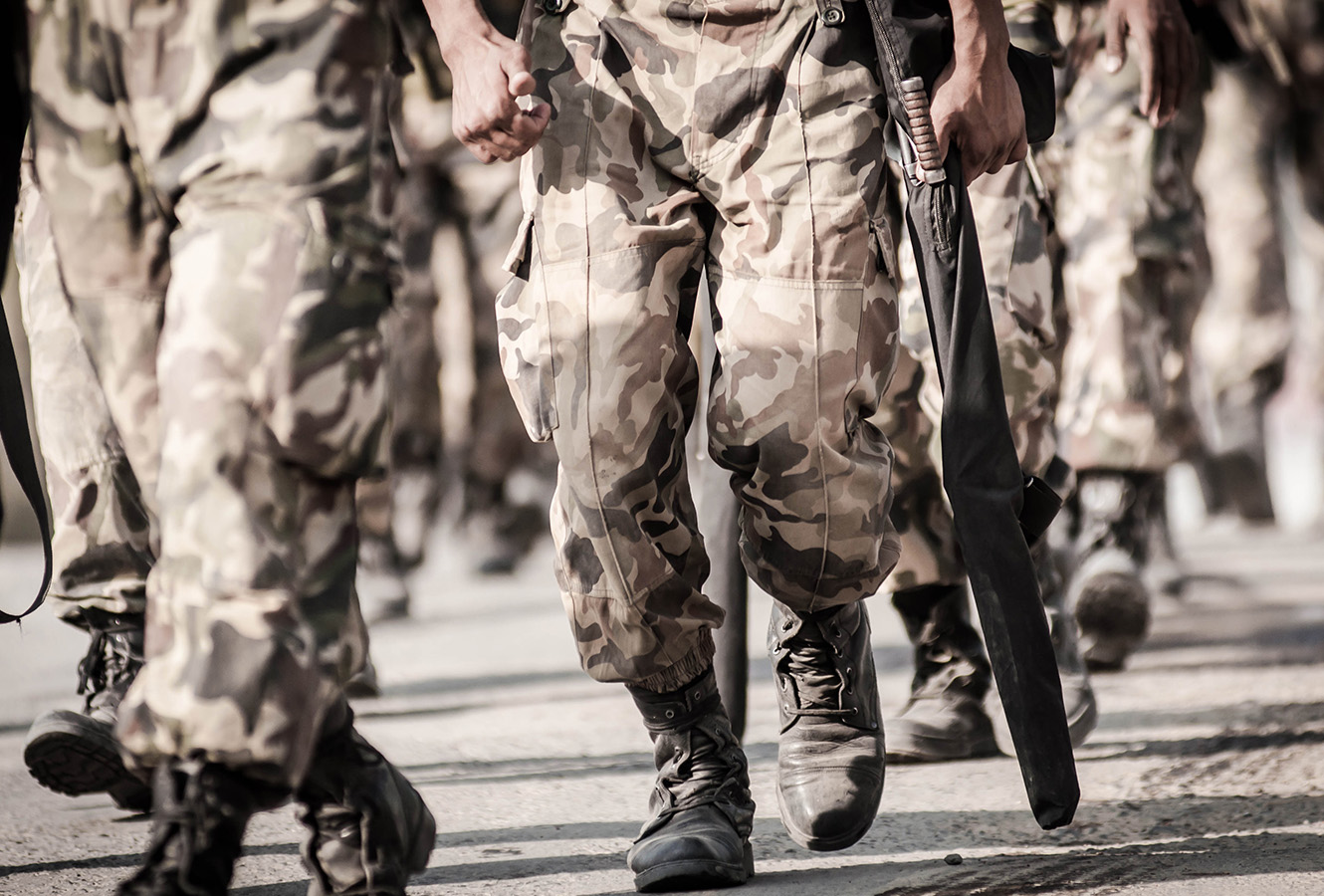ケーススタディー
Our task was to rise to a challenge set by the Defence and Security Accelerator (DASA), part of the UK government Ministry of Defence. The organisation sought innovations that would deliver a step change in military logistics capability across maritime, land and air domains. The autonomous behavioural engine we demonstrated to them enables fast and safe unmanned logistics in congested, dynamic environments.
Demonstrating our capability
We utilised virtual environments to train the algorithm, before implementing it to our platform. This significantly reduced the time and cost for training and avoided the reliance on capturing high quality real-world data.
During the Dstl trial, we also took advantage of simulation to showcase how an autonomous vehicle would deliver goods across a busy Sea Port of Disembarkation (SPOD).
Having provided virtual evidence of the autonomous behavioural engine performing in a complex and dynamic environment we then showed the system operating ‘live’ with our demonstrator robot to the event’s audience.
Pushing technology beyond current boundaries
Our behavioural engine combines AI-based navigation with custom reinforcement learning. Its learned human behaviour predicts where people will go. It then uses that judgement to make its next move.
This happens in real time, allowing a robot to negotiate the fastest route with no pauses, no stops and less downtime. We’ve been careful to constrain the robot to move only in human-like ways, which results in greater levels of acceptance and trust from those sharing its environment.
“The Defence Science and Technology Laboratory (Dstl) team saw that this DASA demonstration is highly relevant to safe interaction of robot-controlled systems and personnel.”

Automation that mimics humans
The logistics hubs, warehouses and facilities of the military supply chain are crowded and dynamic, with personnel, vehicles and mechanical loading equipment constantly on the go.
Any autonomous system must deal with this complexity – and be effective, fast and trusted by the people around it. This is where our technology comes to the fore. It mimics the way humans navigate congestion, predicting movement and finding the fastest route as they go.
This is contrary to typical approaches which have proximity sensors to stop a robot when people are close, thus hindering progress in busy environments.

Automating military logistics
We shared the innovation as part of the ‘Right on Time: Automating Military Logistics’ competition run on behalf of the Defence Science and Technology Laboratory (Dstl) by DASA. As well as recognising its relevance, organisers said that assuring the system and developing an appropriate safety case would be a key stakeholder consideration.
It was also felt that more testing is required and that additional capabilities need to be added – considerations that the CC team agree with and are discussing.
“The Logistic Technology Investigations (LTI) showcase has provided an extraordinary insight into the range of technological areas that Dstl have been experimenting with. What’s really struck me is the relevance of what you’ve been looking at: how the technologies and the competitions you have generated through this whole exercise have direct applicability to some of the most profound logistic and engineering challenges that we face today.”

Automation inspired by other industries
Our solution was originally envisaged to enable robots to navigate through crowded environments such as theme parks or airports.
The DASA project came along at just at the right time for us to demonstrate its utility in applications associated with automating logistics in defence.
It also presented the opportunity to receive live feedback on our prototype and technology framework. A truly valuable exercise indeed.
“We were really pleased how the 200 attendees from across defence responded. They saw the need for a system like this and the benefits. Stakeholders noted the human-like actions, such as hesitation and changing direction. They also saw how the system always tries to move forward and find the fastest route, rather than just stopping and waiting for an obstruction to move. Our work has shown that in busy areas this would mean significantly reduced logistics delivery times.”




